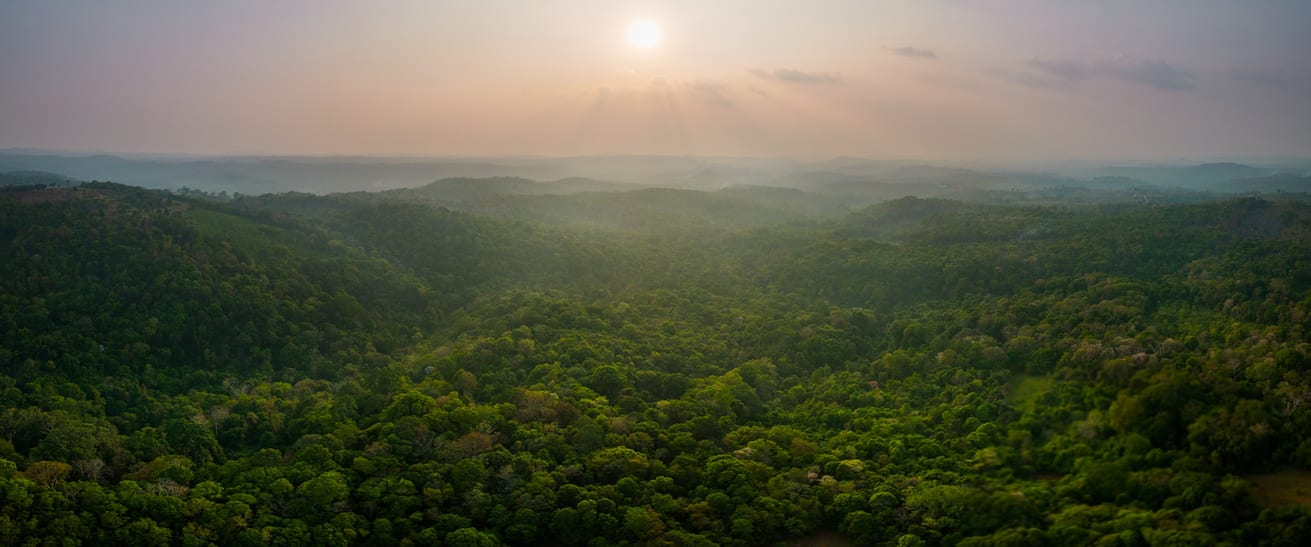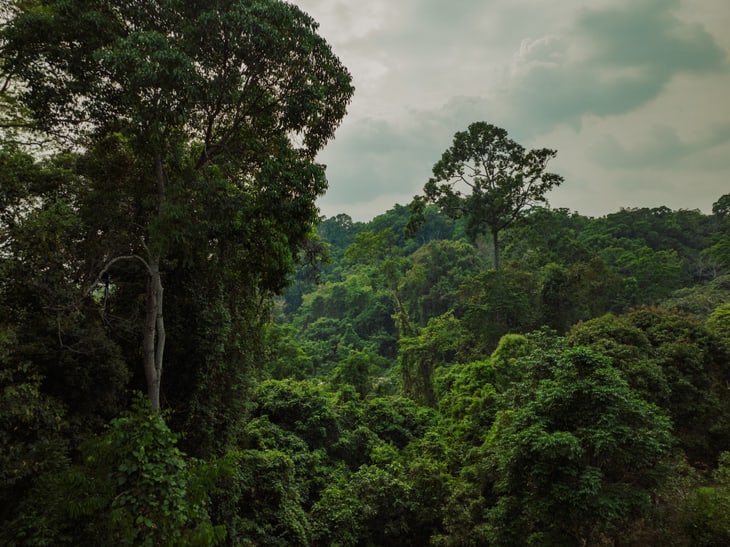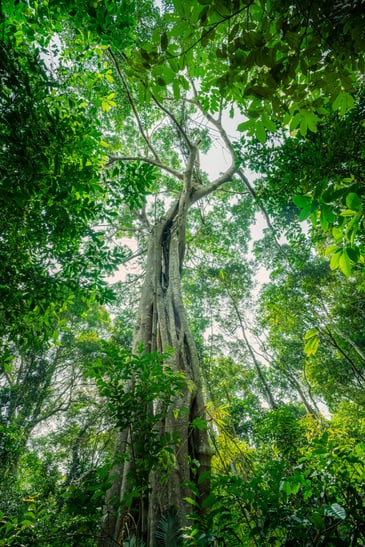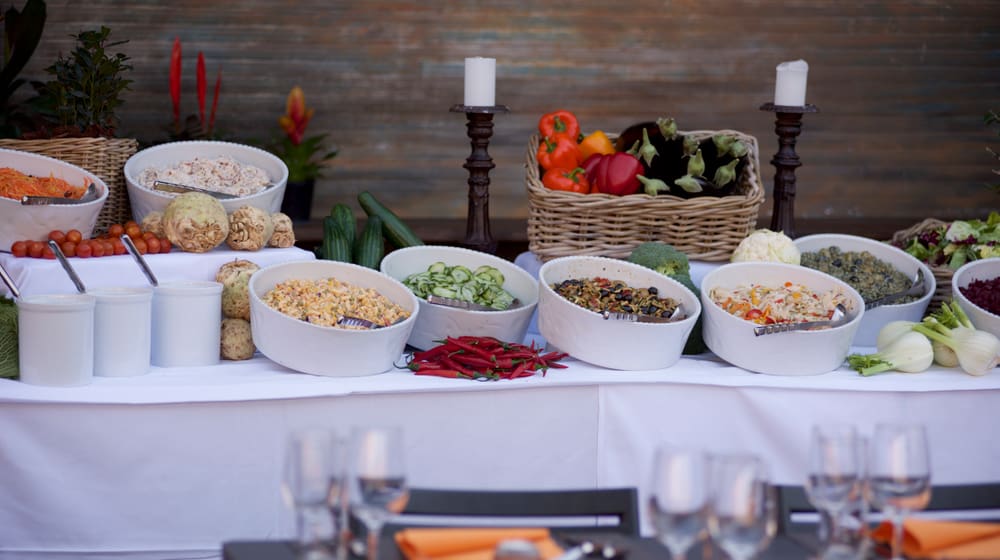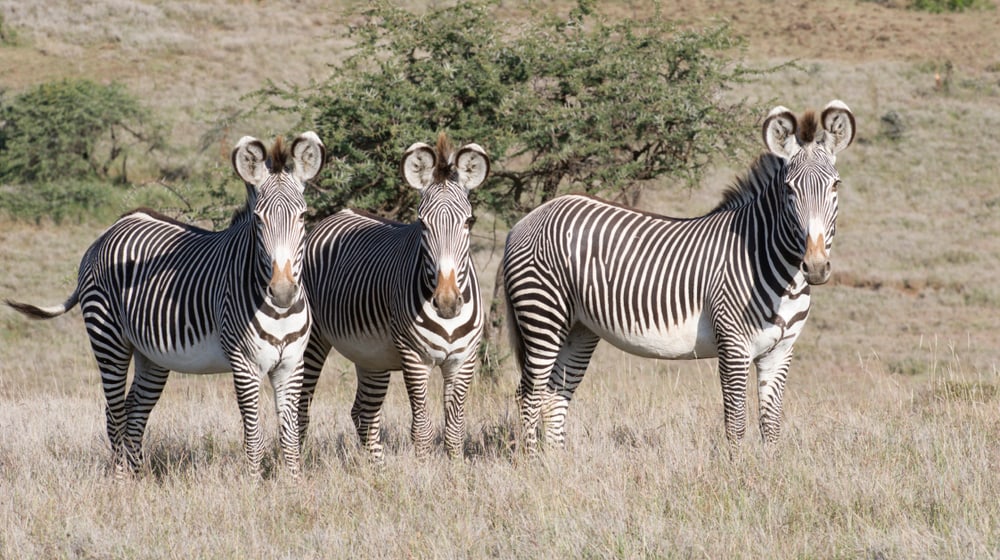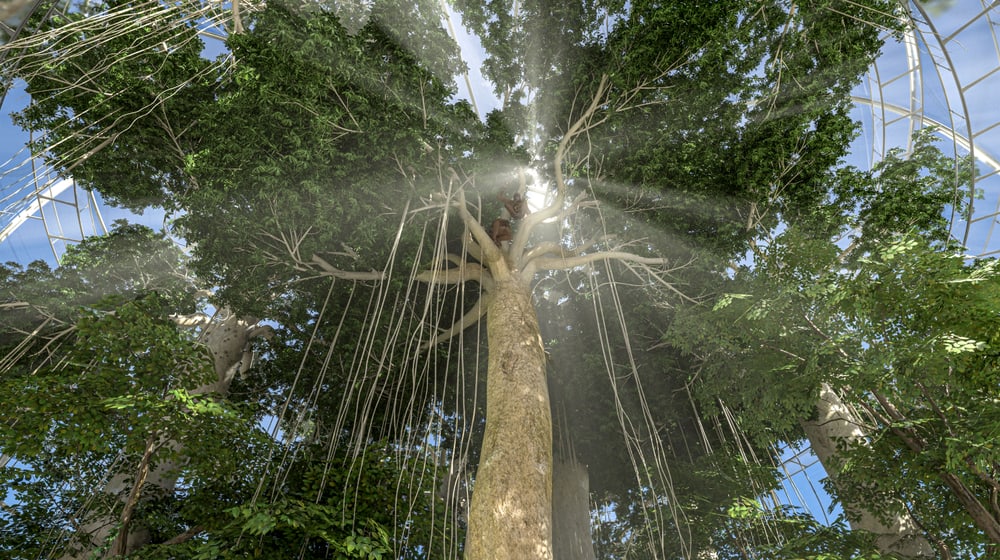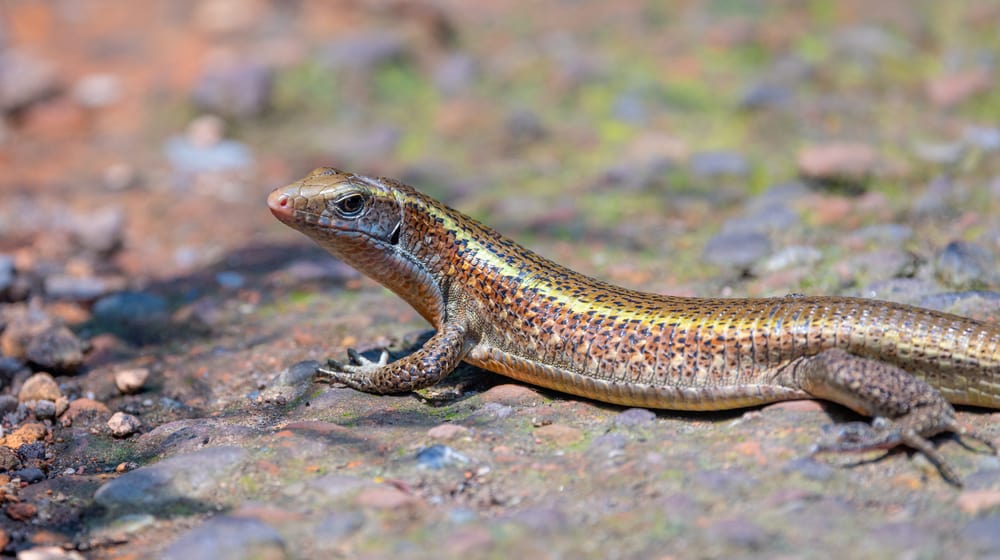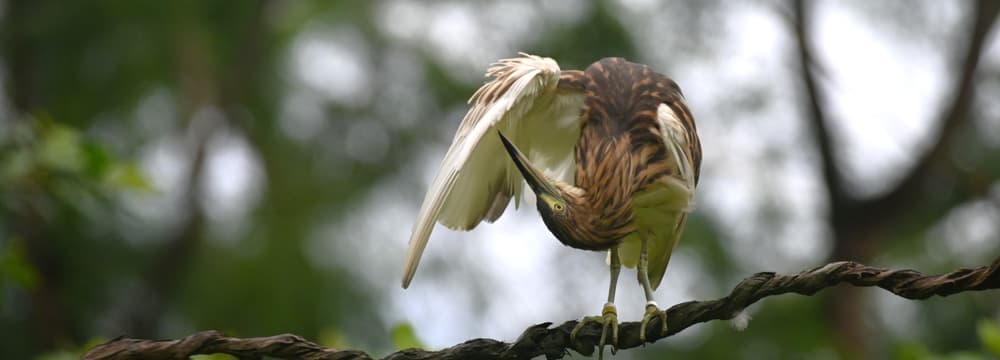
Sustainability at Zoo Zurich
Being an ambassador between humans, animals and nature and as a center for nature conservation, Zoo Zurich is constantly working to conserve resources and optimise its own sustainability.
CO2 compensation
Zoo Zurich offsets its own operational emissions – and continues to work on reducing them on an ongoing basis. To this end, it has signed a voluntary target agreement with the Energy Agency for Industry. In this agreement, the zoo commits itself to further CO2 savings.
Since 2010, Zoo Zurich has determined its CO2 emissions annually using the «Greenhouse Gas Protocol». Emissions fluctuate from year to year and depend on various factors. The latter can only be controlled to a limited extent. For example, the number of visitors, but also periodic maintenance work (e.g. heating renovations) or unforeseeable defects (e.g. coolant leaks in the heat pump) influence emissions, sometimes significantly.
The zoo is not yet able to completely avoid emissions, even with the extensive measures it is taking. For this reason, it compensates for these surpluses, which cannot be influenced, in carefully selected projects. The Zoo places high demands on the projects, which they must meet not only in terms of CO2 reduction, but also in all other aspects of sustainability.
The compensation project
The Keo Seima Wildlife Sanctuary REDD+ protects one of Cambodia's most important rainforests. It is the habitat for various animal species, some of which are critically endangered. On 167,000 hectares of rainforest, surrounded by 297,000 hectares of buffer zone, 13,000 people live in 20 villages.
With the support of the Wildlife Conservation Society WCS, sustainable forest management has been established here that avoids illegal logging. The preservation of the rainforest binds CO2 and creates jobs.
For the population, the project creates a safe and legal habitat (Indigenous Communal Land Titles). Children get access to school education. Seven villages have received legally recognized land titles so far. The goal is for the Bunong to sustainably maintain and protect their own rainforest.
Electricity
Zurich Zoo purchases 100 percent renewable electricity from the «naturemade star» label of ewz. «ewz.pronatur» stands for electricity generated 100 percent from renewable energy sources such as water, sun, biomass and wind. According to ewz, «The naturemade star fund supports the renaturation of water bodies and the enhancement of rare habitats for plants and animals.»
Photovoltaics
The zoo's own photovoltaic systems and solar panels produced almost 3000,000 kWh of electricity at 6 locations in the zoo in 2023. The lion's share of this was supplied by the latest system on the roof and façade of the Masoala Rainforest, which went into operation in spring 2023 and generated almost 180,000 kWh of electricity. Further systems are planned at various locations in the zoo.
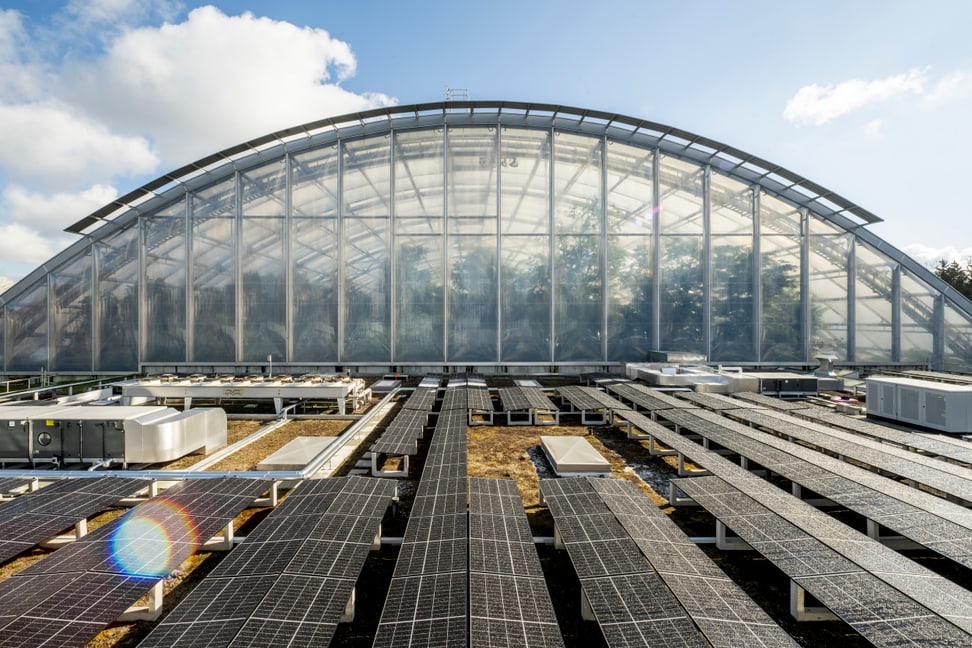
A new photovoltaic system on the roof of the new conservation center at Masoala Rainforest has been providing additional electricity since 2023. Photo: Zoo Zurich, Nick Soland
Where possible, the zoo uses energy-saving lamps and motion detectors in the animal houses, visitor areas and offices. The zoo is further reducing electricity consumption by optimizing pumps and drives.
Heat
Zoo Zurich produces around 98 percent of the heat it needs sustainably. The zoo generates about 77 percent of the heat with (FSC) wood chips, and about 21 percent by means of a heat pump in the Masoala Rainforest. By using about 7000 cubic meters of wood chips, the zoo can save up to 600,000 liters of heating oil per year; the heat pump saves up to 180,000 liters of heating oil.
By optimizing the energy center and thus reducing the amount of oil used, the zoo has cut its annual CO2 emissions by 700 tons since 2010.
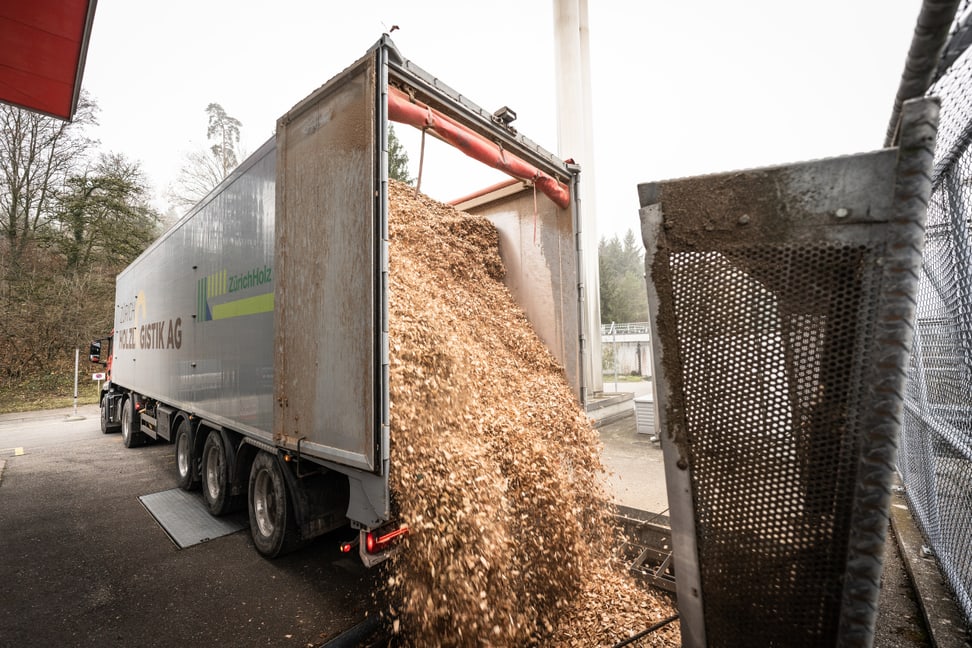
Around 7000 cubic meters of wood chips fuel the zoo's heating system – saving up to 600,000 liters of heating oil. Photo: Zoo Zurich, Marco Schaffner
Heat pump
In 2010, the zoo installed 40 geothermal probes in the Masoala Rainforest, each 250 meters deep. Using a heat pump, they have since generated most of the heat needed for the Masoala Rainforest. Excess cold from the heat pump is used by the zoo through heat recovery for catering and ventilation of the Masoala Rainforest.
Through the use of heat recovery systems, the renewal of the energy center and optimal thermal insulation in renovations and new buildings, the zoo further reduces the heating capacity and especially the oil share. Today, oil accounts for only 1–2% of the total heating requirement, compared to around 30% in the past.
Staggered heating
As a further measure to increase efficiency, an employee of the zoo has introduced a staggered heating system using a clever technical adjustment he developed himself, so that not all consumers in the heating network request full heat at the same time (for example at 6 o'clock in the morning). The building control system regulates this automatically.
For example, the Masoala Rainforest heating system delays the heating process when the weather is expected to be fine (clear skies at 6 a.m.). This allows the sun to do the work. As a result, the zoo saves on heating energy. A similar circuit is installed in the Lewa Giraffe House.
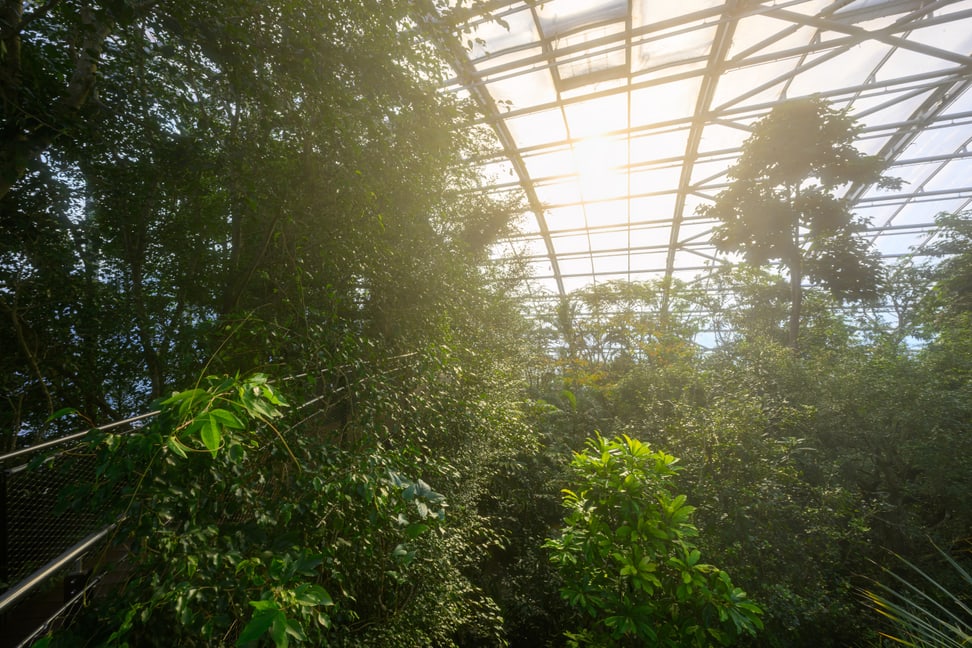
The Masoala Rainforest gets most of its heat from a heat pump – and also directly from the sun on sunny days. Photo: Zoo Zurich, Fabio Süess
Water
Zoo Zurich reduces its water consumption to the minimum, naturally taking into account the needs of the animals. The zoo cleans its water areas, some of which are very large, with pond cleaning systems (plant sand filters, biological treatment plants, pressure sand filters, drum filter systems) in the facilities itself, among other things, and thus has to feed in less fresh water. The zoo uses rainwater in various areas to replenish the ponds and for irrigation.
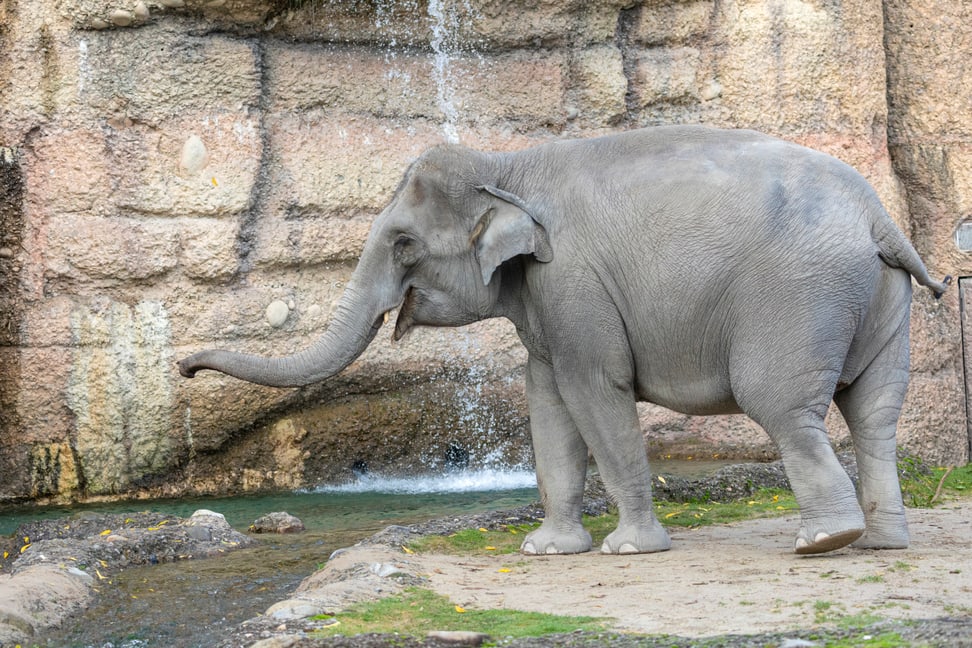
Asian elephant Farha at one of the many water pools in Kaeng Krachan Elephant Park. Photo: Zoo Zurich, Enzo Franchini
The zoo supplies the Masoala Rainforest, for example, with treated rainwater. Where rainwater cannot be used for irrigation, osmosis water is sometimes necessary. During its production, a residual water (gray water) is produced. This is used by the zoo in the Masoala Rainforest to flush the toilets.
Waste
At its depot, Zoo Zurich collects waste separately according to metal, wood, paper, cardboard, glass, construction waste, excavated material, green waste, batteries, paints/lacquers and PET. This enables it to recycle or dispose of the recyclable materials properly. Thanks to centralization, larger skips and an efficient disposal concept, the zoo can also save on disposal trips.
Green waste such as manure and food waste is used for biogas production. Plant parts (trunks and branches) and wood chips from the zoo's own forest are prepared for the animals. After use, they are composted and reused (e.g. as compost, bark mulch, soil).
Old wood is partly used by the zoo for behavioral enrichment of the animals. It is then chipped, used as wood chips in animal facilities, and finally as green waste for biogas production.
Recycling stations for the guests
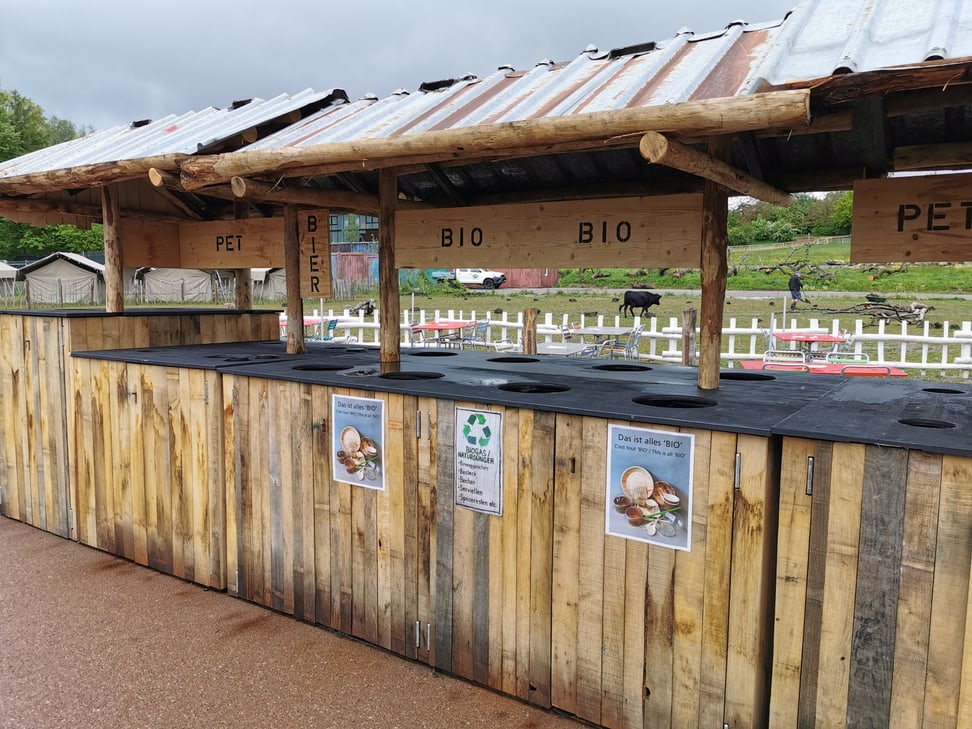
Thanks to a specially designed collection point, zoo guests can properly dispose of their compostable waste – both food scraps and disposable tableware. Photo: Zoo Zurich, Sandro Schönbächler
Since 2021 and 2022, respectively, Zoo Zurich has also been collecting compostable waste in the guest area at its catering location in the Lewa Savanna (Ubele Kiosk) and at Säntisblick. This is not just food scraps – all products sold at the food stands are compostable, including the dishes, drinking cups, etc. Through the collection stations, the Zoo can also feed these to biogas production. The only exception is pet drink bottles. The zoo collects these separately and recycles them.
Transport
Zoo Zurich recommends that visitors travel by public transport and actively communicates this. By means of partnerships with SBB and ZVV, it provides appropriate incentives. It is continuously expanding these partnerships.
In addition, Zoo Zurich is pursuing the project of a cable car from Stettbach to Zurichberg (Zooseilbahn). It makes travel by public transport more attractive and promotes it further.
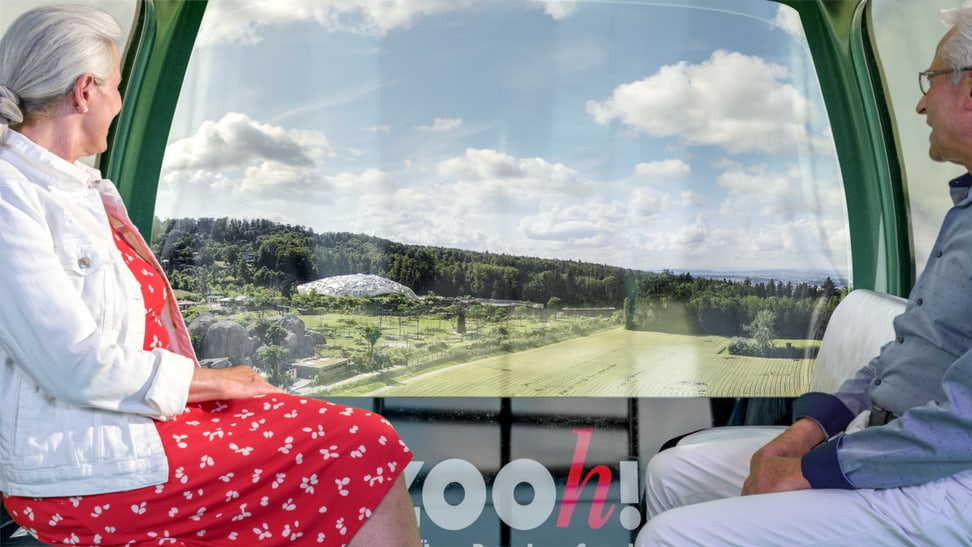
The Zooseilbahn is central to making the zoo even more accessible by public transport, especially for guests from the east regions of Switzerland. Rendering: Region Five Media
The zoo's own vehicle fleet is mostly electric and powered by green electricity. When purchasing new vehicles, the zoo gives preference to electric vehicles wherever possible, even if they are more expensive to purchase than vehicles with combustion engines.
The zoo does not compensate the travel of zoo guests as personal emissions of the visitors.
Money for nature conservation
The profits of the zoo restaurants and zoo stores flow directly into Zoo Zurich and thus support its idealistic goals. Two percent of all sales of the zoo restaurants and zoo stores are donated to the nature conservation projects of Zoo Zurich.
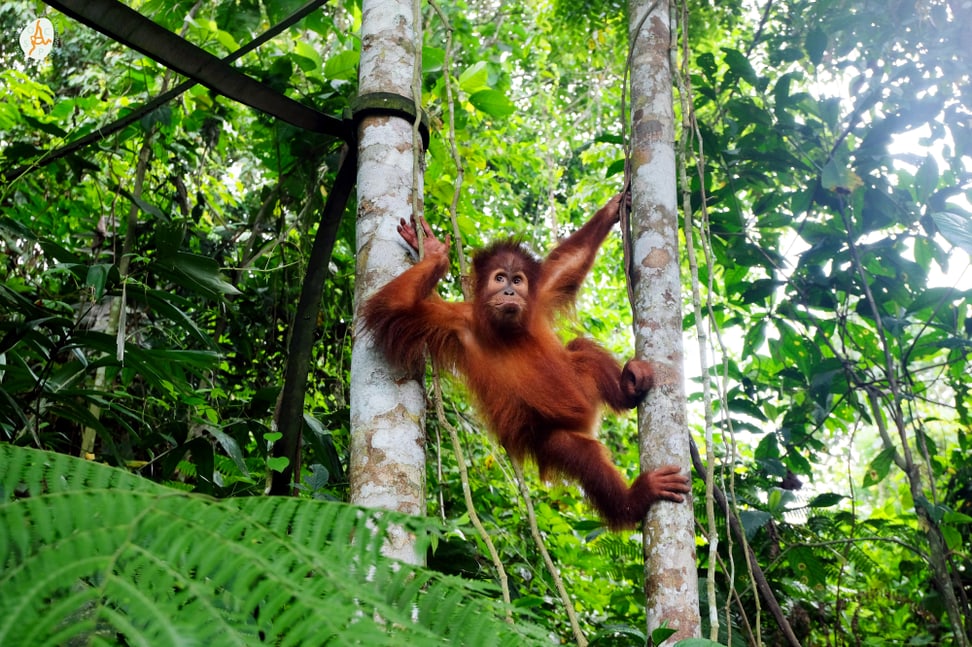
Sumatra is one of eight priority conservation projects that Zoo Zurich has supported for many years. Photo: PanEco Foundation, Aristo
Further development
Zoo Zurich strives to continuously improve in the area of sustainability. Over the next few years, it will be pursuing the following measures, among others:
- Further optimization of energy and water consumption;
- Further waste reduction;
- Checking old houses for thermal insulation, renovating or replacing them;
- Further optimization of transport logistics;
- Ongoing review and adjustment of sources of supply and their sustainability for restaurant and store products.
